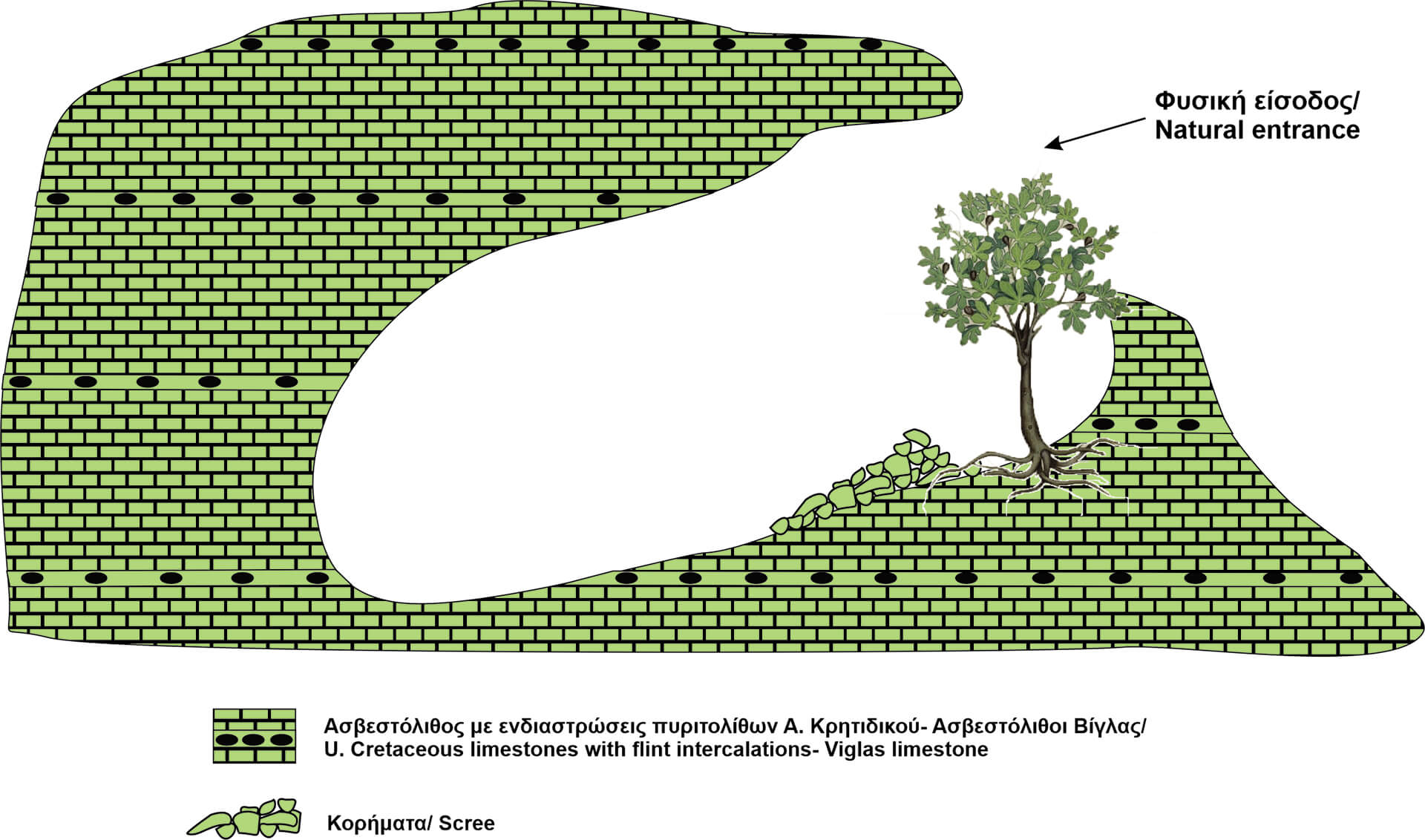The Cave of Rizes is located at the southeastern part of Ithaca. From Vathi taking the road to Marathia, and just before the area Anemodouri, the path that leads us to the cave starts. Inside, we can observe the impressive roots of an old fig tree, which probably give to the cave of Rizes its name. The cave is relatively spacious, for the facts of Ithaca, and for that reason, in the past it was used to house cattle. Also, some scholars mention that the Cave of Rizes could be related to the Homeric Cave of Eumaeus, Odysseus’ swineherd, in which he kept these cattle.

Geodiversity
It is a relatively small but impressive doline which develops in white thin-bedded U. Jurassic-L. Cretaceous (163.5-100.5 My) Vigla limestones, with intercalations and nodules of cherts (Figure 2). The cave has a natural horizontal entrance, through a relatively small opening (Figure 3). Near the entrance, on the side of the ceiling there is a large opening, which has been formed by the collapse of part of the ceiling. Due to this opening, most of the cave is bright and its climate is strongly affected by the external conditions of the environment, as bright light and enough air gets in. In the cave we can distinguish a few karstification forms on its walls. We also observe a few speleothems, such as stalactites, "jellyfish" draperies, and a column near the entrance of the cave.





